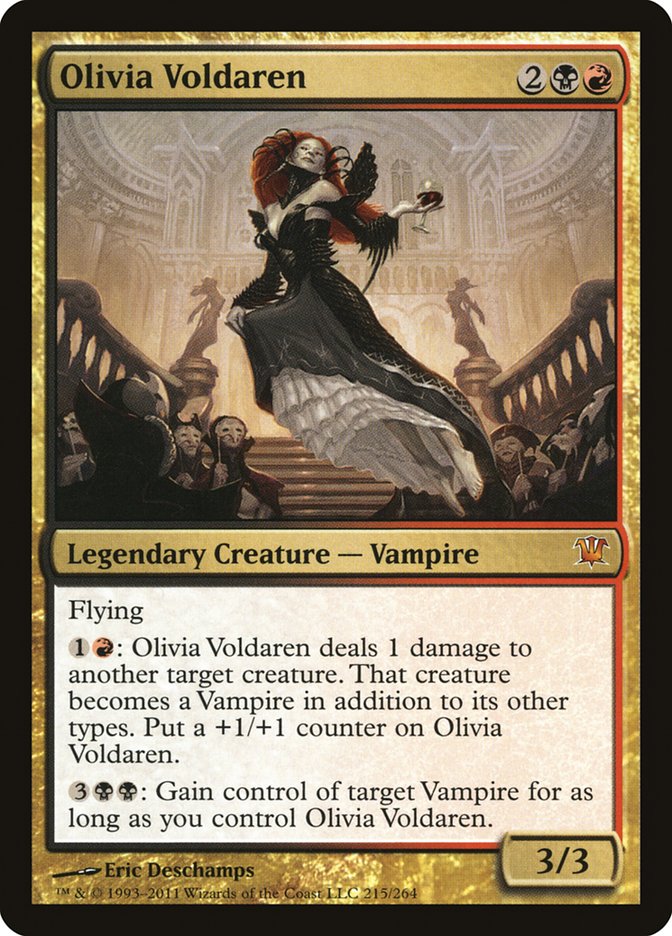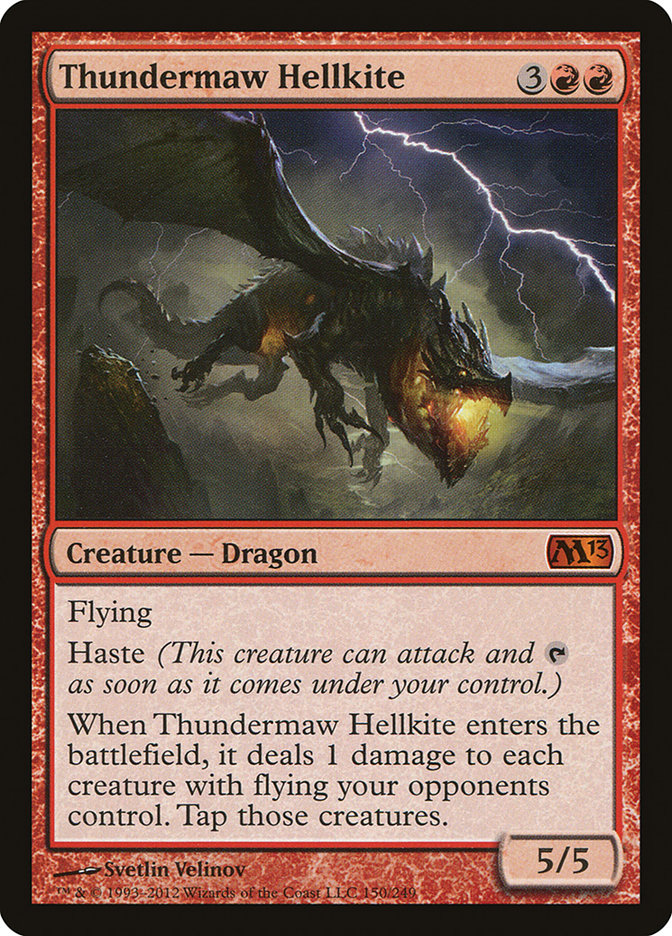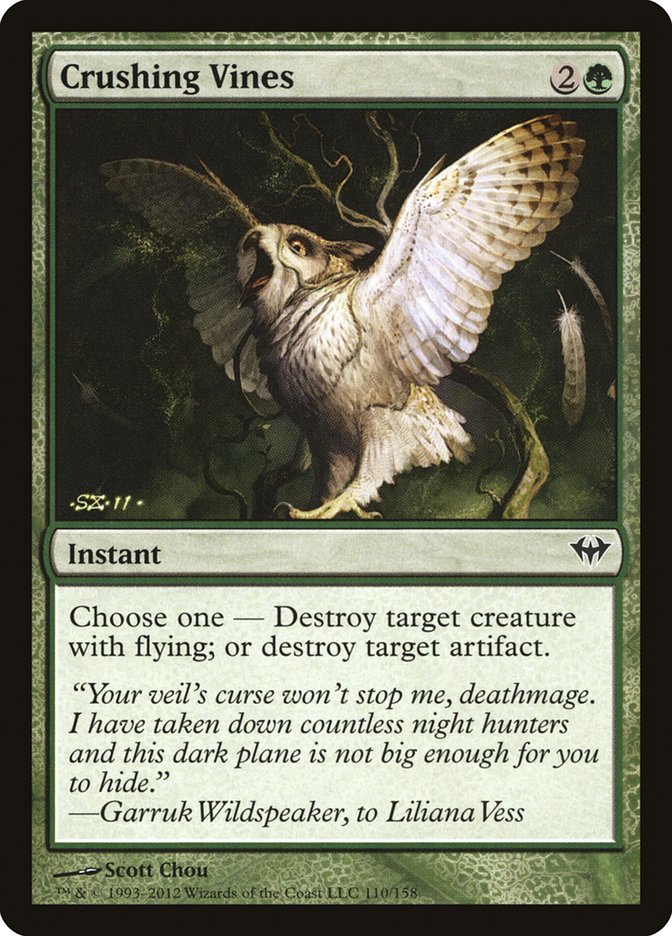"This red deck is impossible to beat! I really wish there was something I could do to improve this matchup. Do you have any suggestions?"
How many times have you asked your buddy that? It’s happened to everyone. You’re crushing through your local metagame or online when a deck comes along that you just cannot beat. It’s easy to write it off as a bad matchup and just hope to dodge playing against that deck again. Heck, this is something people do at the highest of levels of play. But the real question is why are you losing to that deck?
Why, Not What
It’s not what you are losing to; it’s why you are losing to it. Our Standard metagame not too long ago was dominated by Junk Reanimator. At the time it seemed like Jund was unable to beat it even with players maindecking cards like Ground Seal. I, however, was more than happy to play against it every round.
Why was that?
No, I don’t enjoy losing.
I had identified the weakness of the deck and done my best to exploit it. Although cards like Ground Seal solve one problem with Unburial Rites just blowing you out, it didn’t help with when they just got to seven mana and dropped down an Angel of Serenity. The why was that they had the same midgame in Thragtusk and a better late game in Angel of Serenity.
The one thing Jund had going for it was Olivia Voldaren. It’s the one card Junk Reanimator was afraid to play against, and for some reason Jund players continued playing just three Olivias. I immediately identified this and increased the count to four. Even as a legend, all it requires is just one to have a Junk Reanimator player dead without a fast Angel of Serenity.
Adding an additional Olivia didn’t just magically solve the matchup though. I had identified that Junk Reanimator had the better late game and that I needed to either one up the Angel of Serenity or find a way to win before they played one. I decided the best course of action was to try to win before it showed up with Thundermaw Hellkite.
By adding two Thundermaw Hellkites, I put lot of pressure on the Junk Reanimator player while leaving them with very few non-Angel of Serenity solutions. When you have Thundermaw on turn 4, it can lead to fifteen damage by itself before Angel of Serenity is even in the equation. By identifying the problem, I was able to find a solution to what many considered to be the format-defining deck.
Seek
Sometimes finding the solution to a bad matchup isn’t so obvious. A not-so-long time ago, prior to the reigning days of Junk Reanimator, there was a far worse monster in U/W Delver. I don’t think anyone who played at the time would disagree that U/W Delver was by far the dominating deck of the format. Personally I disliked playing the deck; my type of fun isn’t playing the mirror match three-to-six times in a seven-round tournament. I was a big supporter of Wolf Run Ramp for this reason.
Wolf Run Ramp, for those unfamiliar with it, cast green cards to ramp up to Primeval Titan. Upon resolution he would search up a combination of Inkmoth Nexus, Kessig Wolf Run, or double Glimmerpost depending on the board position you were facing. The problem against Delver was sometimes the deck took advantage of your slow, big spells by putting early pressure on and countering the Titan or just straight-out killing you before the Titan could save you. On top of that they also had access to Sword of Feast and Famine.
There weren’t many good solutions from the Wolf Run point of view since cards to solve the problem by killing both flying creatures and artifacts didn’t seem to exist. I took the liberty myself of scouring every legal card in Standard that was red or green and finally found an answer:
The reason why this card was so perfect wasn’t just because it destroyed both the Sword and the flying creature it was going to equip. Frequently, there would be a pivotal turn where the Delver player would end of turn flash in a Restoration Angel, untap, cast a Sword of Feast and Famine, and then equip it to it or any other creature in play—not only producing a very unfair creature but untapping to counter your next spell and sit on the discard effect until you’re out of cards, dead, or both. Being able to cast Crushing Vines on this pivotal turn allowed us to safely resolve a Primeval Titan and thus take over the game.
Marco . . . Marco?
What happens when you can’t find a card to solve your problem? You have a couple of options for how to approach a problem like this. One solution is to commit an overabundance of sideboard slots to dealing with the deck you’re struggling with. If a R/G Aggro deck is giving you a problem, you can overcompensate by adding cards like Centaur Healer and Rhox Faithmender to your Bant deck.
Although this will most certainly help and most likely help you win, adding six-to-eight cards to your sideboard for one particular matchup will have a greater impact on the matchups that aren’t R/G Aggro. So although this would indeed help your R/G matchup, it opens up a whole new can of worms when you don’t have enough cards to board in against that Esper Control deck.
Another option is to simply concede the matchup. If it requires eight sideboard slots to improve a matchup from 20/80 pre-board to 40/60 post-board, the numbers just aren’t on your side. By conceding that one matchup and instead focusing on your other matchups, it can make more matchups end up in your favor. As I said at the beginning, this is common practice and comes down to timing and playing the numbers.
It’s not a practical strategy if the deck dominating the format is the deck you are losing to (for example, Junk Reanimator at its prime). It is, however, practical if the deck is, say, Zombies in today’s metagame. If these two options aren’t good enough, the last solution is the most dramatic. I would simply put that deck on the backburner until whatever deck is dominating you has died down in popularity or until they print something in an upcoming set to drastically shift your chances. This is certainly not an exciting proposition, but it’s one to be considered in dire times.
Assert Yourself
We’ve gone through the process to correctly identify why a deck is a bad matchup, how to find a solution if there is one, and then what to do if there isn’t one available. For me, this is a process I’ve been going through for years that has really helped me break through some tough metagames. It doesn’t always work, but when it does you look like a genius. Speaking of which, I’ve got a Magic Online Championship Series to prepare for. The format is Modern, and it is still relatively unexplored.
Let’s see if I can work my Magic.
Gosu. on Magic Online
@JCuvelier on Twitter



